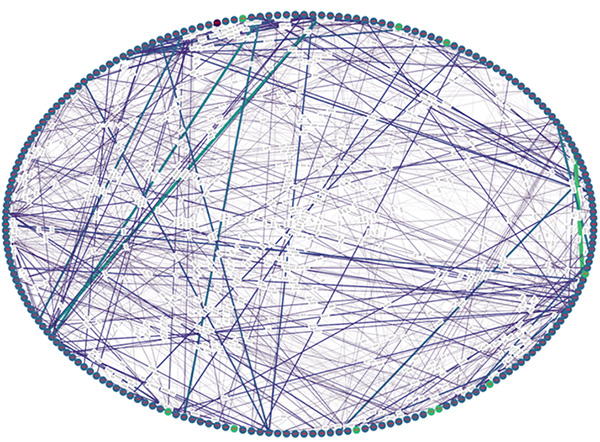![]()
Kerlink and Partners Deploy Internet of Things Project That Demonstrates How Building Owners Can Help Limit Covid-19 Transmission & Future Outbreaks of Viruses.
Combining off-the-shelf IoT technologies and equipment with new mathematical models that simulated the propagation of Covid-19, a pilot solution at a leading Paris university hospital center has demonstrated how building managers in the future can limit the spread of viruses such as Covid-19.
The eight-month trial in 2021 included nearly 200 students and about 20 staff volunteers who wore Bluetooth-enabled badges during their classes, labs and shifts at the Faculty of Medicine (medical school) at Kremlin-Bicêtre AP-HP (Assistance Publique-Hôpitaux de Paris).
In addition to continuous monitoring of building air-quality, the system monitored occupants’ movements and whereabouts using dedicated mathematical models developed by two Paris-Saclay University scientists. These models simulated the propagation of Covid-19 in the student population, based on contact-tracing matrices.
“This made it possible to investigate the importance of actual contacts between individuals in the transmission process, and more generally to estimate the role of the population’s actions, such as gathering in ill-ventilated rooms and the length and type of communication – casual short conversation or longer collaboration – between individuals in the overall spread of the epidemic,” said Bertrand Maury, who along with colleague Sylvain Faure, created the algorithms.
“This evaluation clearly showed this IoT-based solution can help building managers in the future to limit the spread of viruses such as Covid-19.”
 The contact-tracing application in the buildings was paired with air-quality monitoring that included:
The contact-tracing application in the buildings was paired with air-quality monitoring that included:
- CO2 levels in the premises in relation to occupancy rates and hours, and ventilation adjustments,
- Malfunctions in the ventilation or required maintenance of ventilation equipment, and
- Hourly renewal rate (HRR), or complete renewal of the air in a room, which is a key performance indicator (KPI) monitored by building managers in their day-to-day operations.
The contact-tracing matrices were inspired by an algorithm developed by France’s National Center for Scientific Research (CNRS) and Paris-Saclay University that defines epidemiological models for virus transmission. It also provides a first assessment of the influence of CO2 concentration as an indicator of poor air quality that may accelerate viral transmission, e.g. a CO2 level indicating insufficient indoor air renewal.
The pilot project at Kremlin-Bicêtre AP-HP has been validated by the clinical research unit of the Paris-Saclay Faculty of Medicine, while the protection of private data and the identities of the pilot-project participants fully complied with GDPR law.

Source B. Maury, S. Faure – Paris-Saclay University – ©2022
Prof. Olivier Lambotte, vice dean of the Faculty of Medicine at Kremlin-Bicêtre AP-HP, said Covid-19 virus transmission and the desire to develop an “improved-alerting” tool based on epidemiologic models were the initial triggers for this demonstrator project and they have been successfully completed with air-quality monitoring through CO2-level analysis.
“After these initial results, the Faculty of Medicine will be able to refine its systems for combatting the spread of epidemics thanks to a better knowledge of the interactions between students and thanks to a mastery of air quality,” he said. “Mathematical modeling of air renewal in a classroom or amphitheater allows us to estimate in advance the maximum number of people who can be present to maintain a CO2 level below a set threshold.”
The system used technology jointly developed by Kerlink, a specialist in solutions dedicated to the Internet of Things (IoT), Microshare, a provider of a leading data-management solutions for the IoT era, and Enless Wireless, a major manufacturer of intelligent self-powered sensors, communicating in radio mode and dedicated to energy performance & comfort applications in buildings.
The LoRaWAN-based system used Kerlink Wanesy™ Wave, a multi-purpose powered anchor – combining Wi-Fi, BLE and LoRaWAN®, for contact-tracing data collection from Bluetooth badges – and a Kerlink Wirnet™ iFemtoCell indoor gateway to transmit the data to Microshare’s Universal Contact Tracing® application, which ensures end-to-end security, privacy and reliability for the delivery of critical information where it’s needed. The data it produces is GDPR-compliant and delivered through Microshare’s patent-pending rules and sharing engine to only appropriate, designated people in the organization at the right time. Enless Wireless provided the pilot project with easy-to-install and connect indoor air-quality transmitters with embedded CO2 sensors and high-performance D-type batteries.







